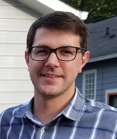
Abstract: Quantum information science (QIS) technologies for computing, communications, sensing, and metrology rely on the ability to generate and detect non-classical information using light and matter. Photonics plays a central role in QIS because of the inherent scalability and low-loss, high-speed transmission of light. Yet, despite its ubiquitous presence, there are no high-performance, scalable, turnkey sources of quantum light, such as single photons or entangled-photon pairs. In this talk, I will provide an overview of my research in quantum nanophotonics with an emphasis on materials processing, fabrication, and metrology of chip-scale devices based on III-V semiconductors and 2D materials. I will present examples of how we are answering challenging questions such as: How can we produce and detect single photons on demand with high efficiency? What is the optimal approach for developing a fully integrated, chip-scale platform that combines quantum light sources, photonic circuits, and single-photon detectors? Is it possible to create artificial quantum materials and structures with tunable and programmable properties for QIS? I will also provide an outlook on future directions for achieving new functionality and capabilities in QIS and distributed quantum computing using a hybrid platform combining quantum nanophotonics with other quantum systems, such as acoustic cavities and superconducting circuits.
Bio: Galan Moody is a research scientist in the Physical Measurement Laboratory at the National Institute of Standards and Technology (NIST) in Boulder, Colorado. He received a B.Sc. in engineering physics from the University of Colorado (2008) and a Ph.D. in physics from JILA (2013), a joint institute between the University of Colorado and NIST. He was a postdoctoral research associate at the University of Texas (2013) before joining NIST as a National Research Council postdoctoral fellow (2013). His research focuses on fabricating and characterizing nanophotonic devices and quantum materials relevant for quantum communications and computing, including 2D materials, semiconductor quantum dots, and hybrid quantum systems. In recognition of his research, he was the recipient of the 2018 Superlattices, Nanostructures, and Nanodevices (SNN) Young Scientist award.